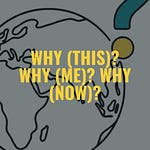Today’s episode of The Global Edge, building on work by global strategist Sophie Krantz, explores how global leaders prepare before entering a new or high-growth country.
Forget dusty old reports; intelligence gathering for global travel is rapidly changing. Imagine needing real-time insights on a sector like fintech, a list of local founders, and the latest regulatory shifts for a trip to Nairobi or Jakarta, all tailored to your specific goals.
While traditional briefings provide a foundation, they often miss the fast-moving signals in dynamic markets. Generic AI offers speed but lacks crucial human nuance.
The future of briefing is being reimagined, with emerging AI tools already personalising logistics. Soon, integrated AI platforms will combine briefing intelligence, verified contact discovery, and seamless meeting orchestration. Picture asking an AI assistant to pull local media signals, cross-reference investor circles, verify founders, and even confirm meetings for you.
This evolution brings new briefing styles. You can use AI to get up to speed quickly, then combine it with insights from local founders and journalists via platforms like LinkedIn or WhatsApp for curated context and connections. Even better, AI-powered networking tools can connect you with vetted local experts for pre-trip briefings, offering on-the-ground intelligence that can even shift your agenda mid-flight.
This new approach thrives on seeking insights from “weak ties” - those peripheral connections outside your immediate network who often point you toward real signals, local shifts, and overlooked opportunities in unfamiliar markets. A truly effective briefing layers information, insight, and intent: the ‘signal shows what's happening, the ‘story’ reveals its context, and ‘connection’ brings you closer to those who can interpret or act on what you learn.
By combining these advanced briefing tools with human connection, especially from those embedded in the local ecosystem, leaders gain a strategic edge, leading to sharper observations and more relevant exchanges on the ground. Because when we see more, we move smarter.











